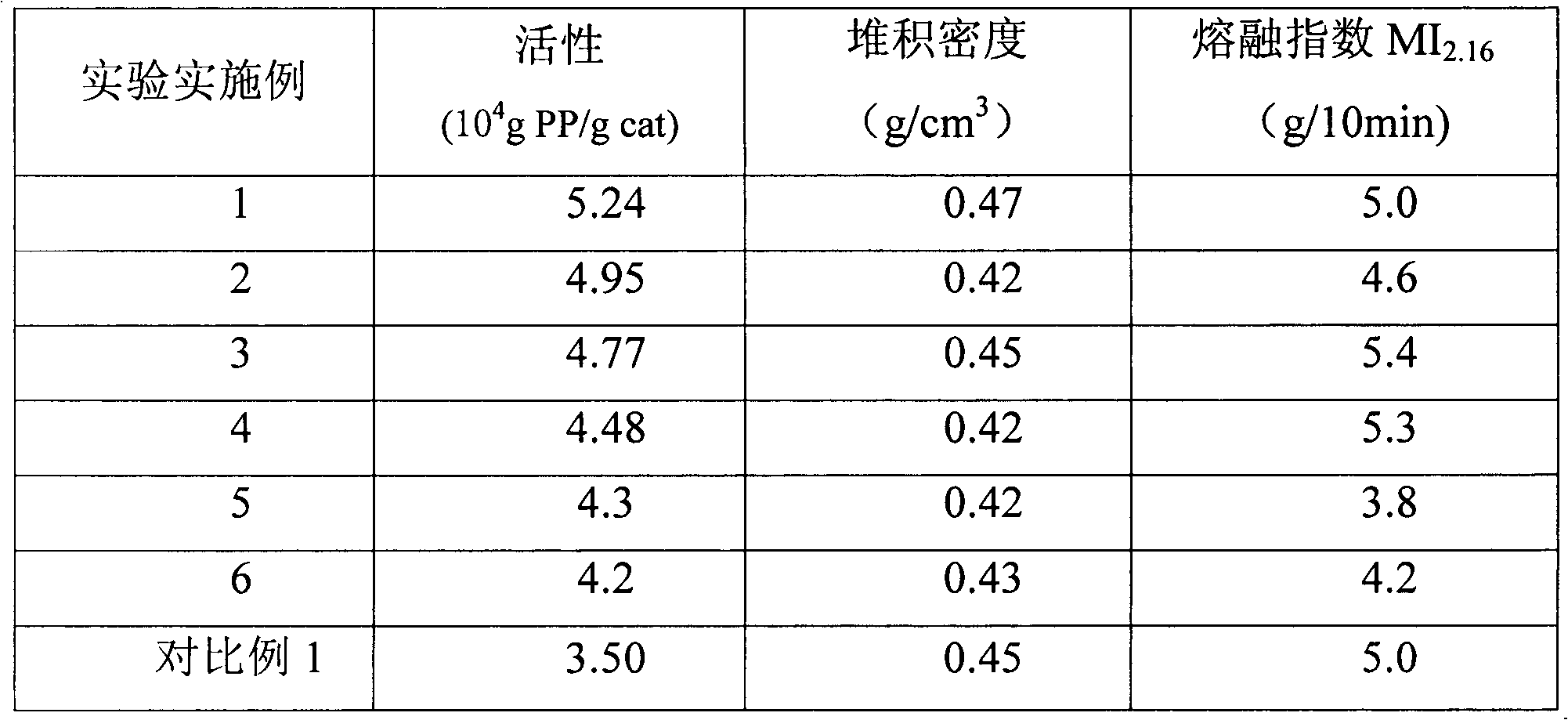Olefin polymerization catalyst and preparation method thereof and olefin polymerization method
An olefin polymerization and catalyst technology, applied in the field of olefin polymerization, can solve the problems of complex synthesis and purification process of glycol ester compounds, high catalyst production cost, low catalyst activity, etc., and achieves low production cost, high olefin polymerization activity, and catalyst activity. high effect
- Summary
- Abstract
- Description
- Claims
- Application Information
AI Technical Summary
Problems solved by technology
Method used
Image
Examples
preparation example Construction
[0037] The method for preparing olefin polymerization catalyst of the present invention comprises:
[0038] (1) contacting the magnesium compound, the silane compound, the organophosphorus compound and the organic epoxy compound in a solvent to form a homogeneous solution;
[0039] (2) In the presence of a precipitation aid, contacting the homogeneous solution with a titanium compound to obtain a mixture;
[0040] (3) Contact the mixture obtained in step (2) with the internal electron donor compound, filter, wash, and dry to obtain an olefin polymerization catalyst; wherein at least one of the magnesium compound and the titanium compound is a halogen-containing compound.
[0041] According to the present invention, although the purpose of the present invention can be achieved as long as the silane compound is introduced in the process of preparing the olefin polymerization catalyst, there is no special requirement on the amount of the various substances, and they can be formul...
Embodiment 1
[0064]In the atmospheric pressure reactor repeatedly replaced by high-purity nitrogen, 4.8 grams of anhydrous magnesium chloride, 70 milliliters of toluene, 4.0 milliliters of epichlorohydrin, 12.5 milliliters of tributyl phosphate and 1.0 milliliters of tetraethoxysilane were added successively. Under the condition of 60 DEG C, reacted for 1 hour, added 1.4 grams of phthalic anhydride and 30 milliliters of toluene, continued to react for one hour, cooled to -28 DEG C, added dropwise 56 milliliters of titanium tetrachloride (drop speed 5 milliliters / min ), gradually warming up to 85°C (heating rate of 5°C / min), adding 1.1 ml of di-n-butyl phthalate (DNBP), keeping the temperature for one hour, filtering, washing twice with toluene, and then adding titanium tetrachloride 48 milliliters, 72 milliliters of toluene, kept at 110°C for 0.5 hours, filtered and then added 48 milliliters of titanium tetrachloride, 72 milliliters of toluene, treated once at 110°C for 0.5 hours, then filt...
experiment Embodiment 1
[0066] After 5 liters of stainless steel autoclaves were fully replaced with nitrogen, 5 milliliters of concentrations were added to be a hexane solution of 0.5 mol / liter of triethylaluminum and 1 milliliter of concentrations to be 1 mol / liter of methylcyclohexyldimethoxysilane ( CMMS) hexane solution and 10 mg of catalyst prepared in Example 1, then add 10 milliliters of hexane to flush the feed line, then add 1 liter (under standard state) hydrogen, and 2 liters of refined propylene, and heat up to 70 ° C. Polymerization was carried out at temperature for 1 hour. After the reaction, the temperature of the reactor was lowered and the stirring was stopped to discharge the reaction product to obtain an olefin polymer. See Table 1 for details of the results.
PUM
 Login to View More
Login to View More Abstract
Description
Claims
Application Information
 Login to View More
Login to View More - R&D
- Intellectual Property
- Life Sciences
- Materials
- Tech Scout
- Unparalleled Data Quality
- Higher Quality Content
- 60% Fewer Hallucinations
Browse by: Latest US Patents, China's latest patents, Technical Efficacy Thesaurus, Application Domain, Technology Topic, Popular Technical Reports.
© 2025 PatSnap. All rights reserved.Legal|Privacy policy|Modern Slavery Act Transparency Statement|Sitemap|About US| Contact US: help@patsnap.com

